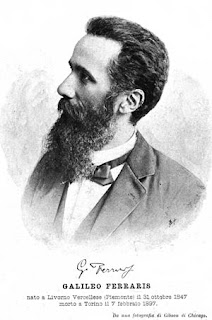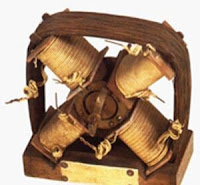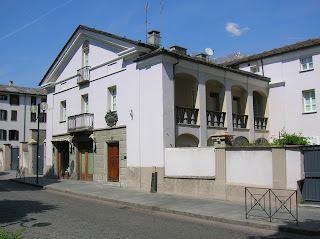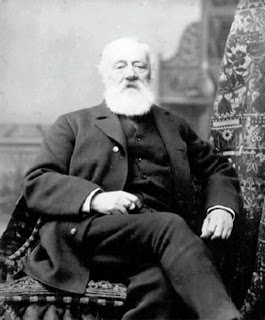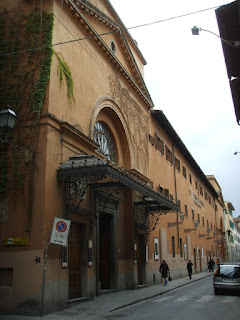Created the first working internal combustion engine
The engineer Eugenio Barsanti, whose internal combustion engine was the first working example of the technology known to have been produced, was born on this day in 1821 in Pietrasanta, a town in northern Tuscany.
A model of the Barsanti-Matteucci engine
pictured on display at a museum in Milan
The Belgian-French engineer Étienne Lenoir and the German Nicolaus Otto are credited with the first commercially successful internal combustion engines, but Barsanti’s machine, which he developed with partner Felice Matteucci, was unveiled in 1853 - six years before Lenoir’s and eight years ahead of Otto’s.
Barsanti might have achieved commercial success himself but shortly after reaching an agreement with a company in Belgium to produce his machine on a commercial scale he contracted typhoid fever, from which he never recovered.
A rather sickly child, known by his parents as Nicolò, Barsanti took the name Father Eugenio after entering the novitiate of the Piarists, the oldest Catholic religious order dedicated to education, where was ordained as a priest.
He took a teaching position at Collegio San Michele in Volterra. It was there, while lecturing on the explosive energy created by mixing hydrogen and air that he realised the potential of using combustible gases to lift the pistons in a motor.
He developed the idea further after meeting Matteucci, an engineer, while teaching at an institute in Florence.
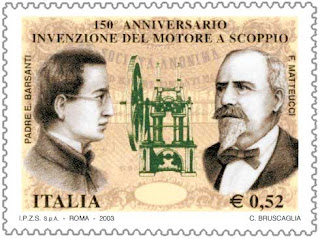 |
| A postage stamp issued to mark the 150th anniversary of the engine's invention |
By 1856, Barsanti and Matteucci had developed a two-cylinder five horsepower motor and two years later built a two-piston engine designed to provide a source of energy to drive machinery in factories and workshops.
The Barsanti-Matteucci engine was quicker and more efficient than the one developed by Lenoir and won a silver medal from the Institute of Science of Lombardy. They believed it could also be used in the propulsion of ships as an alternative to steam.
After the prototype of their engine was built in Milan, the two were all set to go into mass production at a plant near Liège in Belgium owned by the English industrialist John Cockerill when Barsanti fell ill with typhoid fever. He died on April 18, 1864.
After his partner’s death, Matteucci found himself unsuited to the demands of running a commercial business and failed to secure the contracts necessary to make mass production viable. He returned to his previous work in hydraulics.
Nicolaus Otto, on the other hand, had a background in business, giving him an edge not only in marketing skills but in the contacts he could approach for investment. He was the first to enjoy significant commercial success producing internal combustion engines and tends to be credited with its invention.
_-_Facade.jpg) |
| Barsanti's ashes are buried at the Basilica of Santa Croce in Florence |
In 1954, Barsanti's ashes were moved from the Church of San Giovannino degli Scolopi, the small, Piarist church in Florence, to the Basilica of Santa Croce, to rest alongside the remains of such illustrious Italians as Michelangelo, Galileo, Machiavelli, the poet Ugo Foscolo and the composer Gioachino Rossini among many others.
Copies of Barsanti’s engines can be seen at the Osservatorio Ximeniano in Florence and the Leonardo da Vinci National Museum of Science and Technology in Milan.
Travel tip:.jpg)
The wide, sandy beach at Marina di Pietrasanta
is 5km long and attracts thousands of visitors
Pietrasanta, just north of Viareggio in the province of Lucca in Tuscany, still has part of its Roman wall, although as a mediaeval town it was not founded until 1255, expanding around the Rocca di Sala fortress of the Lombards. Its Duomo - the Collegiate Church of San Martino - dates back to the 13th century. Pietrasanta grew in importance in the 15th century due to its marble, the beauty of which was first recognised by the sculptor, Michelangelo, to be followed in later years by such artists as Fernando Botero, Joan Miró, Henry Moore, and Damien Hirst. The town declined during the 17th and 18th centuries, partly due to malaria, but underwent reconstruction in the 19th century. It has a pleasant central square, while the seaside resort of Marina di Pietrasanta is just 3km (1.9 miles) away. Part of the Versilia coastline, Marina di Pietrasanta boasts some of the area's best beaches, stretching for 5km (3 miles).
Travel tip:.jpg)
The waterfront at Viareggio is notable for its many
examples of Liberty-style architecture
Viareggio, which can be found just 13km (8 miles) south of Pietrasanta, is a popular resort also known for its excellent sandy beaches and for its carnival, a month-long event dating back to 1873 that runs from February through to March and features parades of giant papier-mache floats designed to represent well-known public figures. The Tuscan resort is also notable for its beautiful Liberty-style architecture, much of it built in its heyday in the late 19th and early 20th century, many examples of which thankfully survived heavy bombing in World War Two when the town was a target because of its shipbuilding industry. The body of the English poet Shelley, who drowned at sea, was washed up on a beach near the resort in 1822. He was cremated on the beach under the supervision of his friend, the poet Lord Byron. There is a monument to Shelley in the town’s Piazza Paolina.
Also on this day:
54: The death of Roman emperor Claudius
1687: The birth of architect Giorgio Massari
1815: The execution of Joachim Murat, former king of Naples
1884: The birth of anarchist Mario Buda
1988: The birth of sportsman and entrepreneur Piero Dusio
1985: The death of silent movie actress Francesca Bertini
.jpg)
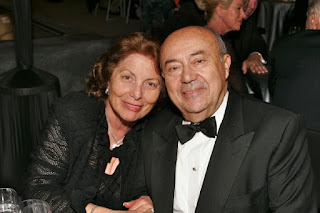
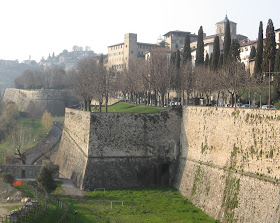
_-_facciata_1_2019-06-23.jpg)
